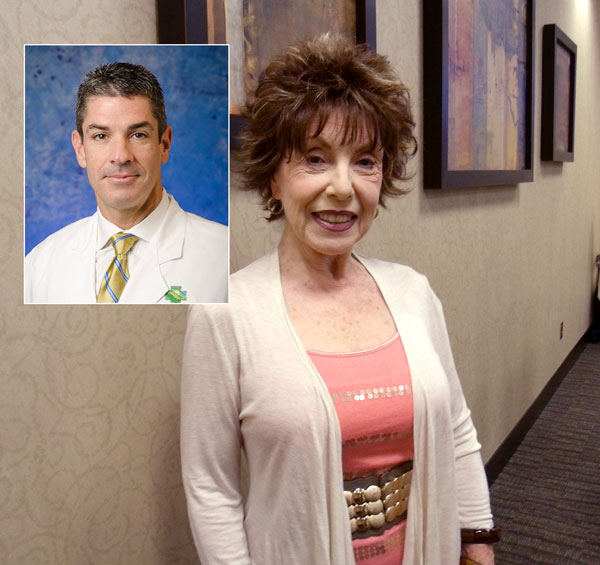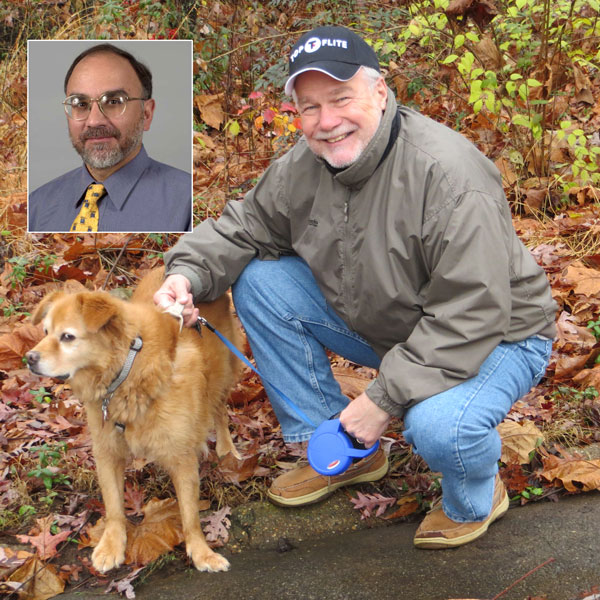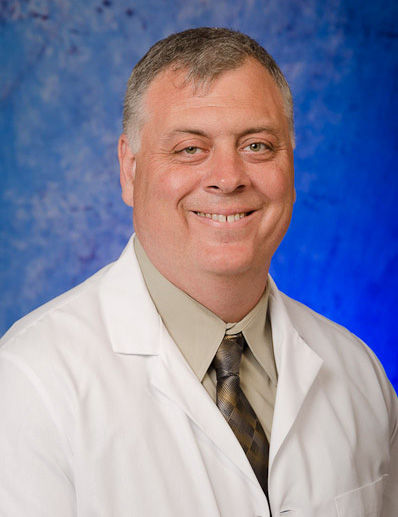- Find a DoctorDoctors by Specialty
- Cardiac Electrophysiology
- Cardiology
- Colon & Rectal Surgery
- Family Medicine
- Gastroenterology
- General & Vascular Surgery
- Gynecological Oncology
- Gynecology
- Infectious Disease
- Internal Medicine
- Interventional Cardiology
- Interventional Radiology
- Nephrology
- Neurology
- Neurosurgery
- Obstetrics & Gynecology
- Oncology
- Oncology & Hematology
- Orthopedic Surgery
- Otolaryngology
- Perinatology
- Psychiatry
- Pulmonary Medicine
- Radiation Oncology
- Rheumatology
- Sleep Medicine
- Thoracic Surgery
- Urology
- View All Doctors
- Our ServicesMedical Services
- Bariatric Services
- Behavioral & Mental Health
- Breast Care
- Cancer Care
- Critical Care
- Ear, Nose, & Throat
- Emergency Services
- Gastroenterology
- Glossary
- Heart Care
- Home Care
- Hospice & Palliative Care
- Imaging & Diagnostics
- Long-Term Care
- Nephrology
- Orthopedics
- Primary Care
- Rehabilitation Therapies
- Robotic-Assisted Surgery
- Sleep Services
- Spine Care
- Stroke Care
- Surgery Services
- Telehealth Services
- Urology
- Urgent Care
- Virtual Urgent Care
- Women’s Services
- Wound Care
- Our Locations
- Patients & Visitors
- About Us
LeConte’s Healthy Lifestyles is a health and wellness publication printed twice a month in local newspapers serving Sevier County and South Knoxville. And here online! We hope you find this information healthful.
Table of Contents
Victory Dance
“It’s Not in My Family”
Thompson Cancer Survival Center Provides Choices for Prostate Cancer Treatment
Prostate Cancer Treatment Choices
Managing Chronic Lung Disease and COPD
Give Yourself the Gift of Better Health — Quit Smoking!
Download this edition
Victory Dance
Schultz is Back on the Dance Floor with Help from LeConte
Paulette Schultz will tell you she danced through East Tennessee before she lived here.
“I’ve been a jazz dancer, a tap dancer, and then went into clogging, and from there did country-western, ballroom, and swing,” Schultz says. “When I was dancing through here I was competing in clogging.”
This diminutive powerhouse from south Florida says she and her husband fell in love with the beauty of East Tennessee and the hospitality of the people who live here. After those dance competitions and some camping trips in the area, they decided to move to Sevierville permanently several years ago.
It’s hard to think of Schultz as a retiree because she is so active. Even today, she’s a dance instructor with Smoky Mountain Shaggers, a dance club based in Knoxville.
In fact, Schultz has taken very good care of herself over the years. Not only is she physically active, but she’s also careful about what she eats, always maintaining a healthy diet. So no one was more shocked than she was when a cancer diagnosis rocked her world.
She was sitting on the couch watching TV with her husband one night, when her right hand brushed against her left breast, and she felt something she knew shouldn’t have been there. It was a small lump.
“My first thought was NO,” Schultz says, “No-no-no, no-no-no.”
“I couldn’t wait to get to chemotherapy because I was in a war.”
She had to come to grips with the truth after taking a closer look. There was definitely a small, pea-sized nodule there. She convinced herself it had to be something benign – maybe just some sort of cyst – but she knew the right thing to do was to see her doctor immediately, just to be sure.
After an examination, her doctor ordered a mammogram and made arrangements for an ultrasound at LeConte Comprehensive Breast Center. She soon found herself in the office of radiologist Robert Santee, MD, where she saw the results.
Santee told her the lump was “teeny tiny,” but that whatever it was, it was going to have to come out. The next step in her diagnosis would be a biopsy.
Dr. Santee sat Schultz down a few days later, and delivered the news that it was cancer.
“Your world absolutely stops. There’s no sound. There’s no air,” Schultz said. “I looked at Dr. Santee and I said, ‘It’s not in my family anywhere that I’ve ever heard of.’”
Dr. Santee told her if you put three different women with breast cancer in a room together, two are going to have no family history of it. “That’s just how it is these days,” says Schultz.
The final diagnosis was triple negative, high grade, and aggressive breast cancer. That means her cancer cells tested negative for the three elements (or receptors) that are usually treatable with traditional cancer drugs. Treatment options for triple negative cancer are few.
 From there, Schultz was escorted to the office of LeConte Surgical Associates surgeon Jeffrey King, MD. He patiently answered every question she had, and shared every option available, leaving the choices up to her.
From there, Schultz was escorted to the office of LeConte Surgical Associates surgeon Jeffrey King, MD. He patiently answered every question she had, and shared every option available, leaving the choices up to her.
Schultz had several important decisions to make. She felt well-armed.
“The best advice was given to me,” Schultz says, “the best options, and I was given so much information, I was able to make the right decisions.”
Schultz thought about what she wanted. She decided she wanted to fight, and fight she did.
“I couldn’t wait to get to chemotherapy because I was in a war,” Schultz says. “I don’t care if I have to crawl from room to room, I put my eye on a target, and I don’t let go until it’s ended one way or another.”
After the cancer-killing chemo, she had surgery at LeConte Medical Center to remove both breasts, and to start the process for reconstruction.
“When I performed the bilateral mastectomy, a reconstructive surgeon was on hand to insert tissue expanders beneath the patient’s skin and chest muscle,” explains Dr. King. “The expanders stretch the skin and muscle to make room for implants, later.”
There was a time when a patient like Schultz would have only been able to have these procedures in a larger city. Not anymore.
“We can perform all surgical procedures related to breast cancer at LeConte Medical Center, including nipple sparing and skin sparing mastectomies with reconstruction,” Dr. King says.
By the time the surgery took place, the cancer was gone. Schultz didn’t just want it to disappear. She wanted it destroyed with no hope of making a comeback.
“I wanted to look in the mirror and see the cancer didn’t take anything away from me,” Schultz says. “I wanted all victories to be mine.”
“I look in the mirror now and I see two great breasts,” Schultz says with a smile, “and that’s the way I like it.”
One of the reasons Schultz had such a good outcome was her early diagnosis. She now uses her experience as a lesson to other women, and men, too.
“If you notice anything different about your breast – maybe it doesn’t look quite the same, maybe it’s gotten lower, or maybe you feel some wetness there – run to your doctor, don’t wait,” she says. “Don’t feel foolish going to the doctor with it, or think that it’s going to go away.”
Schultz says when she was first diagnosed, there were people who asked her if she was going to go back to Florida for treatment. “Why would I want to do that?” she asks. “I already have the best care here. I really, truly believe that.”
Schultz is teaching again, dancing with her second family in Smoky Mountain Shaggers. She says she’s feeling fabulous.
“My experience with LeConte has been great, with wonderful doctors, and I was treated excellently,” Schultz says. “I can’t imagine going anywhere else.”
How to Choose a Surgeon
No matter what kind of surgery you need, it’s critically important to make sure you get the best surgeon for the job. But it’s especially important when you’re facing surgery for a potentially life-threatening disease like cancer.
Among the first questions to ask are how many times the surgeon has performed the procedure you need. There’s no substitute for experience.
It also helps if the surgeon and the hospital have high standards for surgery, following approved techniques and having a good reputation for prescribing medications correctly. An internet search of websites can often clue you in on where they stand.
Don’t be afraid to ask a surgeon if his or her board certification is up to date, or if the surgery is even necessary. You should have a good rapport with the person who will be operating on you, and your surgeon should be open to answering your questions.
LeConte Surgical Associates offers a wide variety of surgical services with board-certified physicians held to the highest standards. LeConte Medical Center has four modern surgical suites where surgeons like Dr. King can do their work.
“LeConte is equipped with integrated high-definition cameras and monitors, LED lighting, and built-in towers for laparoscopic equipment,” Dr. King says. For more information, call (865) 453-WELL.
“It’s Not in My Family”
Paulette Schultz is one of a growing number of breast cancer patients with no family history of the disease. Breast cancer is an equal opportunity killer, and is commonly found in women who aren’t considered at high risk.
The latest studies and surveys show that only one-fourth of the women diagnosed with breast cancer have had a close relative who also had the disease. Family history is a risk factor, but doesn’t cause cancer. It only affects your chances of getting it.
Other risk factors include age, benign breast problems, early exposure to ionizing radiation, having children late in life, having no children, prolonged exposure to estrogen and progesterone, lack of exercise, and drinking too much alcohol. Out of every 1,000 women who have a screening mammogram, 100 are called back for a second mammogram or an ultrasound.
Mammography is an important tool for catching breast cancer early, thereby increasing the chances for recovery. Annual mammograms are recommended for women starting at age 40, no matter what a woman’s risk factors may or may not be.
To schedule a mammogram or for more information call LeConte Comprehensive Breast Center at (865) 446-8000.
Thompson Cancer Survival Center Provides Choices for Prostate Cancer Treatment
As a retired professor of industrial engineering, John Hungerford, 74, is used to taking a methodical, scientific approach to solving problems. When he was diagnosed with prostate cancer in April 2006, Hungerford used the same logic to make decisions about his treatment.
“I used all that good training to plot my treatment plan,” said Hungerford. “But at first, I had kind of a sense of panic about the whole process. You think you have to do something right away.”
But Hungerford’s cancer was in an early stage, giving him some time, and like many prostate cancers, was relatively slow growing. “At first you think, ‘I’m going to die.’ But then you find out that’s not the case if the cancer’s not aggressive. Yes, you’re going to die, but not necessarily from that,” he said.
Hungerford attended a prostate cancer support group at the Cancer Support Community of Knoxville – formerly called the Wellness Community. “I found that group amazingly helpful because a lot of men had a good reservoir of technical knowledge,” he said.
Hungerford considered many current treatment options for prostate cancer.
“Then I heard about this alternative at Thompson Cancer Survival Center, called tomotherapy. It’s basically a very focused kind of radiation that is limited to the cancerous cells and a small area around them,” he said.
Tomotherapy delivers radiation slice-by-slice, a tiny bit at a time, as opposed to hitting the entire prostate at once.
Hungerford went to the Thompson Cancer Survival Center in the summer of 2006, and met Dr. Daniel Scaperoth, a radiation oncologist.
“Right from the outset I liked Dr. Scaperoth,” said Hungerford. “He was very straightforward with me and answered all my questions to my satisfaction. I felt like he was in it for the patient’s benefit, and he was trying to respond to what the patient needed. There was a great deal of honesty between him and me.”
He said the Thompson Center impressed him as well.
“From the time my wife and I went to Thompson, we had a good feeling about the place.”
“From the time my wife and I went to Thompson, we had a good feeling about the place,” he said. “It’s a light and airy atmosphere, and the people were the same way. I just had a really good feeling about it.”
Starting in mid-July, Hungerford had 39 tomotherapy treatments, one per weekday, until the end of summer.
“They do precise CT [computed tomography]scans to locate the prostate,” he said. “There’s no pain. I was just lying there maybe 20 to 30 minutes each time. You don’t really feel anything, actually.
“Toward the end of the treatment series you feel a little bit of fatigue,” said Hungerford. “The last couple of weeks I felt sluggish and slow, like I was walking through mud.”
But over the weeks, Hungerford’s PSA tests showed that the cancer was being destroyed. A PSA test is a blood test that detects the prostate- specific antigen, an indicator of cancer.
“I’d say the treatment was very successful,” he said. “My PSA level started coming down to well below where it needs to be, and I’m pleased with that,” he said. “I haven’t had any problems since.”
Hungerford said he would recommend Thompson Cancer Survival Center to anyone facing prostate cancer treatment.
“The personnel are just great, and the technicians that worked with me when I was going through treatment were terrific too. Everyone was so helpful,” he said.
Hungerford said his wife, Ruth, met friends in the waiting room each time they went for treatment.
“She’s outgoing and got to know most of the people in the waiting room, and we’ve stayed friends with a lot of those people after treatment. It was really kind of neat to have that social aspect, unanticipated,” he said.
“I thought the care was outstanding, and it’s been that way ever since,” said Hungerford. “I’ve been treated well.”
Weighing Your Options for Prostate Cancer
Of all the cancers, prostate is one of the slowest growing. If caught early, patients typically have plenty of time to decide on the best treatment option for their particular situation.
“People die of prostate cancer, but it’s also very treatable and for the most part, curable,” said Dr. Daniel Scaperoth, a radiation oncologist at Thompson Cancer Survival Center.
Each of the treatments currently available for prostate surgery has a similar success rate, with a variety of side effects. In general, they fall into two main categories: radiation or surgery.
“Usually men will go to a urologist or radiologist and get a couple of different opinions,” said Dr. Scaperoth. “There are support groups in Knoxville, and men will share their stories about what went well, and what didn’t go well.”
“And the decision depends a little bit on age,” he added. “Younger patients in their 50s and 60s will lean a little toward surgery because they can always add radiation later. People over 70 might lean more toward radiation.”
There are so many options it can be difficult to choose, Dr. Scaperoth said. If it’s an early stage of disease, men can even choose not to do anything at all.
“Watchful waiting is also OK, with active surveillance of PSA levels,” Dr. Scaperoth said. “The PSA test is what gives you lot of options.”
The American Urological Association recommends that men talk to their physicians about when to have a first PSA screening and how often they should be screened after that. In general, men ages 55 to 69 should be screened every two to four years.
“It’s really something you should talk to your doctor about, based on your own risk factors,” said Dr. Scaperoth.
Prostate Cancer Treatment Choices
doctor with patientSurgery – Removal of the prostate with an open incision, or with a less invasive robotic system that uses several smaller incisions. The risks of surgery would include infection and anesthesia problems, and a slightly higher risk of incontinence afterward.
Radiation – Radiation treatment is done either from the outside, bombarding the prostate with radiation beams, or from within the prostate, by implanting radioactive seeds inside the prostate. Tomotherapy is one type of external radiation, which applies the radiation in thin, precise slices. Risks of radiation would include a higher irritation to the bowel and rectum than surgery. Seed implants can cause swelling that can cause difficulty urinating.
Cryosurgery – A technique for freezing and killing abnormal cells, cryosurgery is being tested for very early stage cancers. It is a one-time procedure performed under anesthesia.
Hormone Therapy – Male sex hormones can cause prostate cells to grow. Drugs that suppress hormones can slow the growth of cancer, but they have some serious side effects. These drugs are only used in more advanced cancers.
Managing Chronic Lung Disease and COPD
“It’s as easy as breathing,” we sometimes say, when an endeavor comes naturally or without difficulty. But when a person faces a chronic lung disease, breathing can be anything but easy.
Chronic Obstructive Pulmonary Diseases (COPD) is a term that refers to a large group of lung diseases that can interfere with normal breathing. The two most common conditions of COPD are chronic bronchitis and emphysema.
According to the American Lung Association, more than 12 million Americans have COPD, and an additional 12 million may have impaired lung function. The causes of COPD are not fully understood, but it is generally agreed that the primary cause of chronic bronchitis and emphysema is cigarette smoking. Air pollution and occupational exposures also may play a role, especially when combined with cigarette smoking. There are also inherited forms of COPD.
A pulmonologist is a physician who specializes in conditions and diseases of the lungs. He or she can diagnose lung diseases using tests such as spirometry, which determines how well the lungs receive, hold and utilize air, and peak flow monitoring, which measures the speed at which a person can blow air out of the lungs. Other diagnostic tests might include blood tests, chest X-rays and sputum culture.
William Cole II, MD, is a pulmonologist at LeConte Pulmonary and Critical Care Medicine, where he works with patients to diagnose, treat, and help manage COPD and lung diseases. His team includes trained and experienced nurse practitioners who “work closely with Dr. Cole to ensure that our patients’ needs are met,” said Pamela Wright, DNP. In addition to ongoing care, the practice offers same-day site appointments for pulmonary flare-ups. 
About Chronic Bronchitis
Chronic bronchitis means long-term inflammation of the bronchi, which results in increased production of mucus, as well as other changes. Patients with chronic bronchitis usually have a cough and sputum production for many years before they develop shortness of breath.
In acute bronchitis, bacteria or viruses may be the cause, but in chronic bronchitis there is typically no specific organism recognized as the source of the disease. To be classified as chronic bronchitis, cough and expectoration must occur most days for at least three months per year, for two years in a row. Other causes of symptoms, such as tuberculosis or other lung diseases, must be excluded. Symptoms may include cough and expectoration, or coughing up mucus.
Chronic bronchitis may cause frequent and severe respiratory infections, narrowing and plugging of the breathing tubes (bronchi), difficulty breathing and disability. Other symptoms may include a bluish appearance of the lips and skin because of decreased oxygen levels, abnormal lung sounds, swelling of the feet, and in severe cases, heart failure.
Treatment for chronic bronchitis may include oral medications, inhaled medications, such as bronchodilators, oxygen supplementation from portable containers, lung reduction surgery to remove damaged areas of the lung, and in rare cases, lung transplantation.
About Pulmonary Emphysema
Emphysema is a chronic lung condition in which the alveoli, or air sacs, may be destroyed, narrowed, collapsed, stretched, or overinflated. Damage to the air sacs is irreversible and results in permanent “holes” in the tissues of the lower lungs. Pulmonary emphysema occurs when there is an obstruction of air flow, generally caused by smoking or exposure to air pollution or other irritants. There is also a rare inherited form of the disease.
Emphysema does not develop suddenly, but occurs very gradually. Patients with emphysema usually have shortness of breath and develop a cough and sputum during a respiratory infection, or in the later stages of the illness. Early symptoms of pulmonary emphysema may include shortness of breath, cough, and symptoms such as fatigue, anxiety, sleep problems, heart problems, weight loss and depression.
The goal of treatment for people with pulmonary emphysema is to live more comfortably with the disease by providing relief of symptoms and preventing progression of the disease with minimal side effects. Treatment may include:
- Quitting smoking, which is the single most important factor for maintaining healthy lungs
- Antibiotics for bacterial infections
- Bronchodilators–either oral or inhaled—which are the mainstay of treatment
- Vaccinations to prevent complications from other types of infections
- Exercise, including breathing exercises to strengthen the muscles used in breathing as part of a pulmonary rehabilitation program
- Oxygen supplementation from portable containers
- Nutritional support, since patients may experience malnutrition and weight loss
- Lung reduction surgery to remove the damaged area of the lung
- Lung transplantation
For additional information about treatment of lung disease at LeConte Medical Center call (865) 453-WELL.
Give Yourself the Gift of Better Health — Quit Smoking!
Every year in the U.S. nearly 400,000 people die from tobacco-caused disease, making it the leading cause of preventable death. Another 50,000 people die from exposure to secondhand smoke.
Smokers not only have increased risk for lung disease, including lung cancer and emphysema, but also have increased risk for heart disease, stroke, and oral cancer. Almost one-third of all cancers are related to smoking. Smoking kills more women each year than breast cancer.
Every day approximately 3,600 children between 12 and 17 years of age smoke their first cigarette, and an estimated 1,100 of them will become regular smokers. At least 4.5 million adolescents (ages 12 to 17 years) are current smokers. Among 12th graders, 20 percent smoke cigarettes daily.
Give yourself the gift of health – if you don’t smoke, don’t start! If you do smoke, quit! According to the Surgeon General, quitting smoking is the single most important step one can take to improve the length and quality of life. As soon as you quit, your body begins to repair the damage caused by smoking. You and others around you will breathe easier!
Covenant Health has a Stop Smoking app that can help you track your progress as you give up the smoking habit. To download the app or learn more, click here.
























